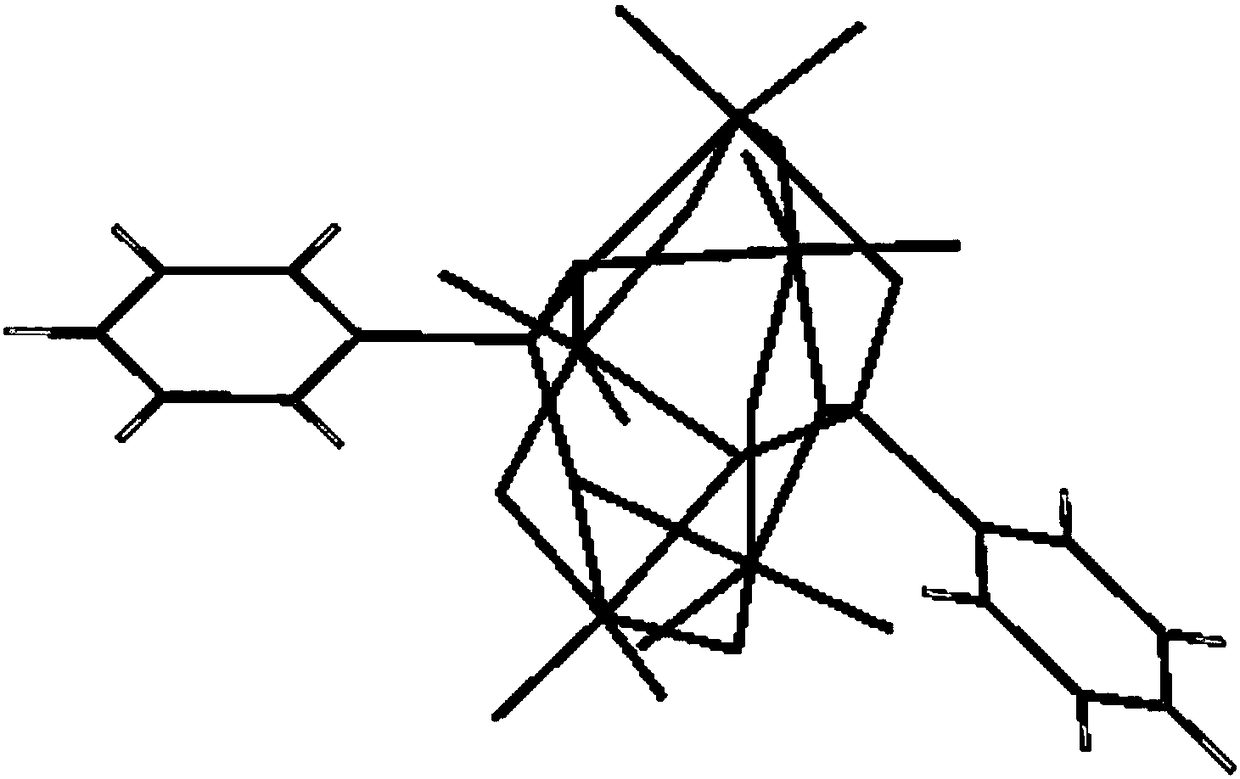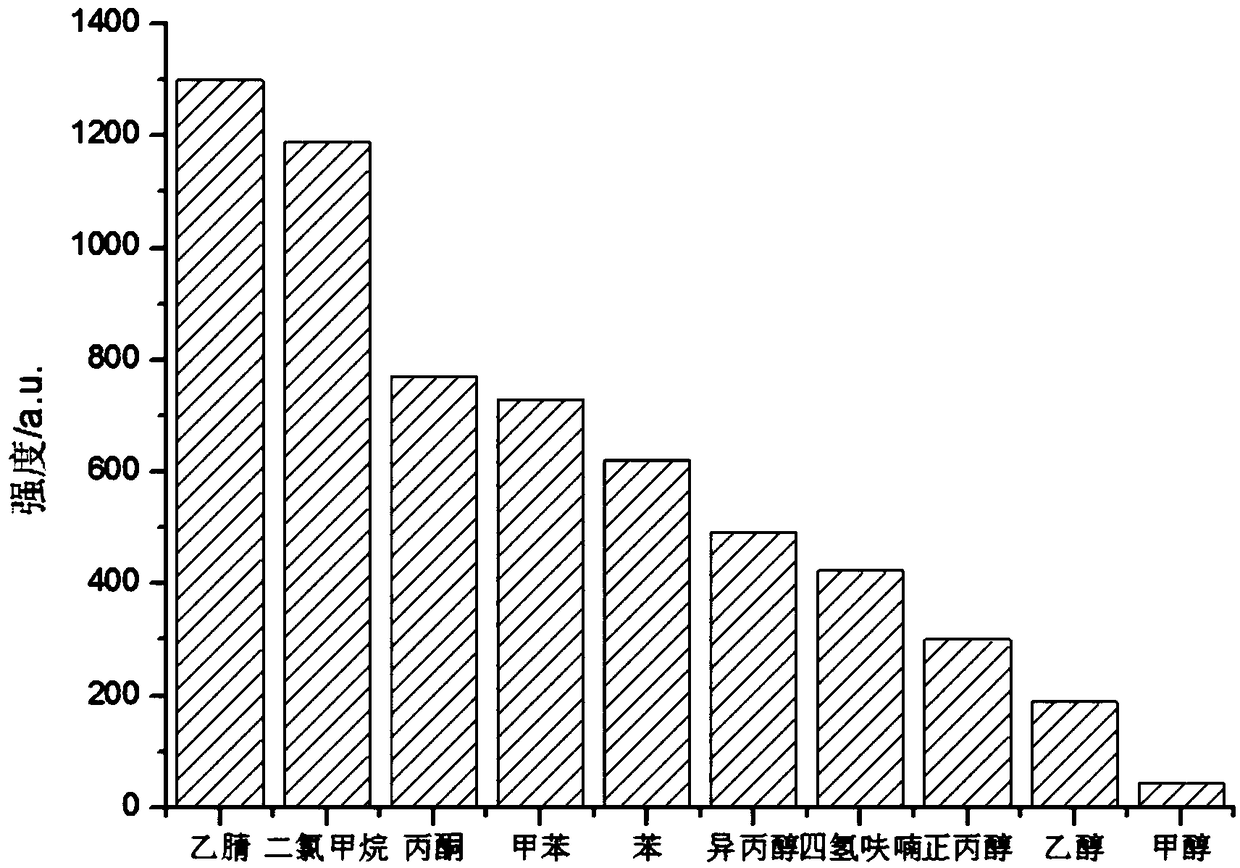A method for synthesizing rare earth-heteropolyacid coordination polymers with heteropolyacid ligands
A technology of coordination polymers and heteropolyacids, which is applied in chemical instruments and methods, fluorescence/phosphorescence, instruments, etc., can solve the problems of low precision and sensitivity, achieve good luminescence performance, excellent channel characteristics, and overcome poor portability. convenient effect
- Summary
- Abstract
- Description
- Claims
- Application Information
AI Technical Summary
Problems solved by technology
Method used
Image
Examples
Embodiment 1
[0033] A method for synthesizing rare earth-heteropolyacid coordination polymers with heteropolyacid ligands, comprising the following steps:
[0034] The first step: heteropolyacid ligand (NH 4 ) 4 [(C 6 h 5 PO 3 )2 Mo 5 o 15 ]·5H 2 Preparation of O
[0035] Weigh 9.7g of ammonium heptamolybdate powder and 3.9g of phenylphosphoric acid in a beaker, add 65mL of water, the proportion of ammonium heptamolybdate to water is 15%, and the proportion of phenylphosphoric acid to water is 6%, heat the solution until its volume decreases to 40-45mL, cooled to room temperature, and filtered the slightly turbid solution after cooling. As the clear solution evaporates in air, large crystals separate out. Finally, the crystals were collected by filtration. The crystals were rinsed twice quickly with distilled water and dried in air. The yield of the compound is 12.1 g, and the yield is 92%;
[0036] Step 2: Crystal Preparation
[0037] Weigh a mixed sample of 0.07g of lanthanu...
Embodiment 2
[0041] A method for synthesizing rare earth-heteropolyacid coordination polymers with heteropolyacid ligands, comprising the following steps:
[0042] The first step: heteropolyacid ligand (NH 4 ) 4 [(C 6 h 5 PO 3 ) 2 Mo 5 o 15 ]·5H 2 Preparation of O
[0043] Weigh 10.4g of ammonium heptamolybdate powder and 4.5g of phenylphosphoric acid in a beaker, add 65mL of water, the proportion of ammonium heptamolybdate to water is 16%, and the proportion of phenylphosphoric acid to water is 7%, heat the solution until its volume decreases to 40-45mL, cooled to room temperature, and filtered the slightly turbid solution after cooling. As the clear solution evaporates in air, large crystals separate out. Finally, the crystals were collected by filtration. The crystals were rinsed twice quickly with distilled water and dried in air. Compound yield is 12.4g, yield rate is 88%;
[0044] Step 2: Crystal Preparation
[0045] Weigh a mixed sample of 0.09g of lanthanum nitrate an...
Embodiment 3
[0049] A method for synthesizing rare earth-heteropolyacid coordination polymers with heteropolyacid ligands, comprising the following steps:
[0050] The first step: heteropolyacid ligand (NH 4 ) 4 [(C 6 h 5 PO 3 ) 2 Mo 5 o 15 ]·5H 2 Preparation of O
[0051] Weigh 11.0g of ammonium heptamolybdate powder and 4.9g of phenylphosphoric acid in a beaker, add 65mL of water, the proportion of ammonium heptamolybdate to water is 17%, and the proportion of phenylphosphoric acid to water is 7.5%, heat the solution until its volume decreases to 40-45mL, cooled to room temperature, and filtered the slightly turbid solution after cooling. As the clear solution evaporates in air, large crystals separate out. Finally, the crystals were collected by filtration. The crystals were rinsed twice quickly with distilled water and dried in air. Compound yield is 13.4g, yield rate is 89%;
[0052] Step 2: Crystal Preparation
[0053] Weigh a mixed sample of 0.1g of lanthanum nitrate a...
PUM
 Login to View More
Login to View More Abstract
Description
Claims
Application Information
 Login to View More
Login to View More - R&D
- Intellectual Property
- Life Sciences
- Materials
- Tech Scout
- Unparalleled Data Quality
- Higher Quality Content
- 60% Fewer Hallucinations
Browse by: Latest US Patents, China's latest patents, Technical Efficacy Thesaurus, Application Domain, Technology Topic, Popular Technical Reports.
© 2025 PatSnap. All rights reserved.Legal|Privacy policy|Modern Slavery Act Transparency Statement|Sitemap|About US| Contact US: help@patsnap.com



